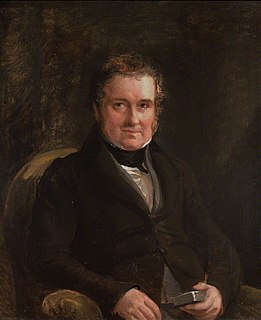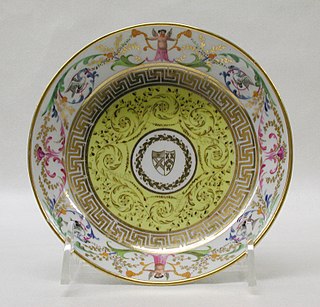Related Research Articles

Elizabeth Amy Dillwyn was a Welsh novelist, businesswoman, and social benefactor. She was one of the first female industrialists in Britain.
The history of Swansea in South Wales covers a period of continuous occupation stretching back a thousand years, while there is archaeological evidence of prehistoric human occupation of the surrounding area for thousands of years before that.

John Dillwyn Llewelyn FRS FRAS was a botanist and pioneer photographer.

Sketty Hall is a venue used for hosting social functions, business functions and conferences in Singleton Park, Swansea, south Wales. The original building was built in the early 18th century as a private house. Over the years it has seen a number of extensions, modifications and changes of use to its present-day role.
Swansea was a borough constituency. It was represented in the House of Commons of the Parliament of the United Kingdom. It elected one Member of Parliament (MP) by the first-past-the-post system of election.

Lewis Weston Dillwyn, FRS was a British porcelain manufacturer, naturalist and Whig Member of Parliament (MP).

The Cambrian Pottery was founded in 1764 by William Coles in Swansea, Glamorganshire, Wales. In 1790, John Coles, son of the founder, went into partnership with George Haynes, who introduced new business strategies based on the ideas of Josiah Wedgwood. Lewis Weston Dillwyn became a partner in 1802 and sole owner when George Haynes left the pottery in 1810. In 1811 Dillwyn took T.& J. Bevington into partnership, the company becoming known as Dillwyn & Co.

William Weston Young (1776–1847) Quaker Entrepreneur of Bristol and Glamorganshire; artist, botanist, wreck-raiser, surveyor, potter, and inventor of the firebrick.

The Nantgarw China Works was a porcelain factory, later making other types of pottery, located in Nantgarw on the eastern bank of the Glamorganshire Canal, 8 miles (13 km) north of Cardiff in the River Taff valley, Glamorganshire, Wales. The factory made porcelain of very high quality, especially in the years from 1813–1814 and 1817–1820. Porcelain produced by Nantgarw was extremely white and translucent, and was given overglaze decoration of high quality, mostly in London or elsewhere rather than at the factory. The wares were expensive, and mostly distributed through the London dealers. Plates were much the most common shapes made, and the decoration was typically of garlands of flowers in a profusion of colours, the speciality of the founder, William Billingsley. With Swansea porcelain, Nantgarw was one of the last factories to make soft-paste porcelain, when English factories had switched to bone china, and continental and Asian ones continued to make hard-paste porcelain.

William Billingsley (1758–1828) was an influential painter of porcelain in several English porcelain factories, who also developed his own recipe for soft-paste porcelain, which produced beautiful results but a very high rate of failure in firing. He is a leading name associated with the English Romantic style of paintings of groups of flowers on porcelain that is sometimes called "naturalistic" by older sources, although that may not seem its main characteristic today.

Thomas Pardoe was a British enameler noted for flower painting.
This page is a list of High Sheriffs of Glamorgan. Sheriffs of Glamorgan served under and were answerable to the independent Lords of Glamorgan until that lordship was merged into the crown. This is in contrast to sheriffs of the English shires who were from the earliest times officers of the crown. Sheriffs in the modern sense, appointed and answerable to the crown, were instituted in the county of Glamorgan in 1541.

Lewis Llewelyn Dillwyn was a Welsh industrialist and Liberal politician who served as MP for Swansea for 37 years.
George Haynes (1745–1830) was a British entrepreneur, pottery manufacturer, banker, and newspaper proprietor of Swansea, Wales.

Thomas Baxter Jnr. was an English porcelain painter, and a watercolour painter and illustrator.
George Grant Francis (1814–1882) was a Welsh antiquary and civic leader born in Swansea

Castellau is a hamlet, with a country house of the same name in the county borough of Rhondda Cynon Taf, South Wales. Historically, it lies within the parish of Llantrisant, just north-west of Beddau. It is connected with the history of the Trahernes. In 1988, Ysgol Castellau became the first Welsh medium education school to open in the southeast within new buildings.

Mary Dillwyn (1816–1906) is considered to be the earliest female photographer in Wales, who took photographs of flowers, animals, family and friends in the 1840s and 1850s. She provided a raw insight to the domestic lives of women and children living in 19th century Britain, pushing the boundaries of what could be considered as worthy subjects to photograph.

Robert John Dickson Burnie was a Liberal politician who served as MP for the Swansea Town constituency from 1892 to 1895. He was regarded as being on the radical wing of the party and was popular with working-class electors. Defeated by Sir John Llewelyn in 1895 he was rejected as a candidate for the constituency in 1900 due to his opposition to the South African War.
William Dillwyn,, was a British American-born Quaker active in the abolitionist movement in colonial America and after 1774, Great Britain. He was one of the twelve committee members of the Society for Effecting the Abolition of the Slave Trade when it was formed in 1787.
References
- Helen Hallesy, “The Glamorgan Pottery, 1814-1838”, Gomer Press 1995.